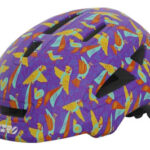Electric bikes are transforming how we ride, and the debate about motor types is central to choosing the right e-bike. When considering a Flyer E Bike or any electric bicycle, understanding the nuances between hub motors and mid-drive motors is crucial, especially if you anticipate tackling hills or hauling cargo. Let’s delve into why, for many riders, particularly those using cargo bikes, a mid-drive motor offers significant advantages.
Hub Motors vs. Mid-Drive Motors: Torque and Gearing Matter
Some argue that a less powerful hub motor is sufficient for most riders. While this might hold true for flat, even terrain and lighter loads, it overlooks a fundamental aspect of cycling: gears. A hub motor, typically single-speed in its application to the wheel axle, directly powers the wheel. In contrast, a mid-drive motor integrates with the bike’s drivetrain, utilizing the gears to optimize power and efficiency.
Think of it like driving a car. You wouldn’t try to start uphill in high gear, would you? Gears are designed to provide mechanical advantage, making it easier to climb hills and carry heavy loads. Mid-drive motors leverage this principle, allowing the motor to operate efficiently across a range of speeds and inclines. This becomes particularly important when comparing torque output. While a hub motor might boast a respectable torque figure, a mid-drive motor, especially when paired with lower gears, can effectively double that torque at the wheel where it matters most. For example, an 80Nm hub motor pales in comparison to the 160Nm or even 120Nm (in smaller models) of mid-drive options like BBSHD or BBS02 when considering real-world hill-climbing power.
Real-World Experience: Hills and Cargo Bikes Demand More
Personal experience vividly illustrates this difference. Building and riding 2WD hub motor bikes with dual 80Nm motors and substantial 52V batteries revealed their limitations in hilly environments. These setups, despite their robust specifications, struggled on the hills of the Monterey Bay area. The strain on the components was palpable, raising concerns about long-term durability.
Switching to a mid-drive motor transformed the experience. Suddenly, hills became manageable, even enjoyable. The bike climbed steadily without stressing the motor, a testament to the efficiency of geared mid-drive systems. This wasn’t about speed; it was about effortless power and reliability when faced with challenging terrain.
This distinction is even more pronounced with cargo bikes. Whether it’s a mid-tail, long-tail, or front loader, cargo bikes are inherently heavier and designed to carry substantial loads. Hub motors can be adequate for flatter areas, but for true versatility and the ability to conquer hills with cargo, mid-drive motors are the superior choice.
 Mongoose Envoy, Surly Big Fat Dummy and LvH Bullitt cargo bikes
Mongoose Envoy, Surly Big Fat Dummy and LvH Bullitt cargo bikes
Consider the practical demands of different cargo bike styles:
- Mid-tail cargo bikes: Offer a balance of maneuverability and cargo capacity, often used for everyday errands and family transport.
- Long-tail cargo bikes: Extend the cargo area significantly, ideal for larger loads and multiple passengers.
- Front loader cargo bikes (box bikes): Designed for maximum cargo volume and stability, often used for commercial deliveries or carrying bulky items.
Each of these cargo bike types benefits immensely from the enhanced power and efficiency of a mid-drive motor, particularly when navigating hills or carrying heavy loads. When choosing a flyer e bike or any electric cargo bike, carefully consider your typical riding environment and cargo needs. For riders in hilly areas or those planning to haul significant weight, the advantages of a mid-drive motor are undeniable, offering a more capable and enjoyable riding experience.

